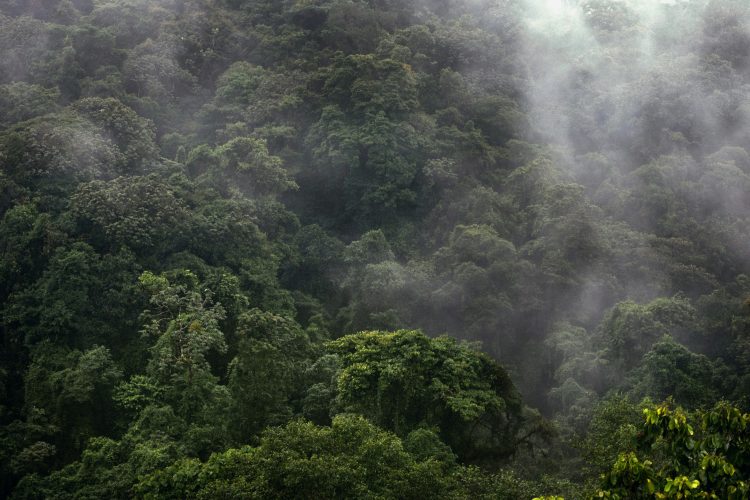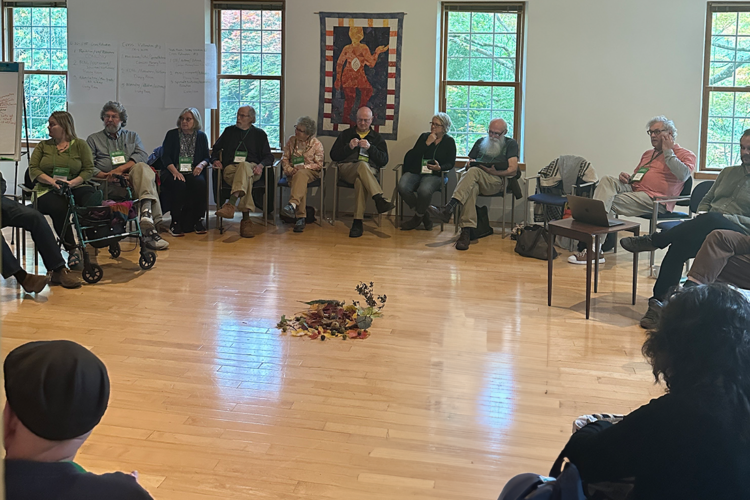A Report from UNFCCC Negotiations
A Report from UNFCCC Negotiations

On June 4-15, 2014, international climate change negotiations were held in Bonn, Germany under the United Nations Framework Convention on Climate Change (UNFCCC). These “inter-sessional” negotiations were preparation for the annual UNFCCC Conference of Parties (COP). The next COP will be in Lima, Peru, December 1-12, a meeting which is referred to as the COP 20.
BACKGROUND TO THE UNFCCC NEGOTIATIONS
The UNFCCC climate change negotiations began with the adoption of the Convention in 1992 and include the protocol to the UNFCCC, known as the Kyoto Protocol (KP). The KP was adopted in 1997, brought into force in 2005, and commits industrialized countries (and some transitioning into a market economy) to Green House Gas (GHG) emission reduction targets. Delegations are currently negotiating elements for a new, legally binding agreement for all parties, to be approved at the COP in 2015.
As a multilateral effort, the structure of the UNFCCC negotiations enables the poorest to richest have a voice in the negotiations. For the poorest and those most vulnerable to the current rise in global temperatures, these negotiations are about survival. To emerging and developed economies, these negotiations are more often about maintaining or developing economic competitiveness in a changing economic landscape. For our young and future generations, these negotiations are about whether they can thrive as we have on this extraordinary planet.
THE CHALLENGES
The international climate change negotiations continue to encounter, at varying levels, deep mistrust and disappointment, often split along “developing” and “developed” countries, whose status according to these negotiations was defined in the Annexes in the KP.
Developing countries, known as non-Annex 1 parties, express deep concern that developed countries have not taken a sufficient lead or fulfilled commitments in GHG emission mitigation, climate financing, capacity building, and technology transfer. According to the UNFCCC, overall emissions in 2012 by Annex B parties to the KP with commitments to the first commitment period were 22.6 percent below the 1990 base levels, although this is not representative of all industrialized countries and is also less than the proposed 25-40 percent target. The United States has not ratified the Kyoto Protocol, and Canada pulled out in 2011. KP parties such as Australia and Japan have pulled back on their commitments, and too few developed countries have signed up to a second commitment period. There is deep disappointment and anger over limited support to adaptation, including low levels of delivered climate finance which is key both to building trust and the ability of poor countries to increase mitigation. Developed country signatories to the KP often express frustration over low recognition for achievements reached (some countries are far more active than others). The GHG emission landscape has shifted since countries were categorized under the KP in 1997. The most rapid increase in GHG emissions is now coming from developing countries.
SPECIFICS OF THE JUNE NEGOTIATIONS
The June negotiations focused on three areas of negotiation, specifically the Subsidiary Body for
Implementation (SBI), the Subsidiary Body for Scientific and Technological Advice (SBSTA), and the Ad Hoc Working Group on the Durban Platform for Enhanced Action (ADP). These first two negotiation foci, the SBI/SBSTA, focus on how to implement already agreed decisions. The third, the ADP, is separated between “workstream 1”, which aims to create a new, legally binding agreement for all parties by the COP 21 in Paris for implementation in 2020, and “workstream 2”, which aims to strengthen pre-2020 commitments of developed country signatories to the Kyoto Protocol, referred to as Annex 1 parties.
WHAT HAPPENED?
Although there were no major advances in June, the negotiations ended with a relatively positive atmosphere. This cannot be said of the June 2013 inter-sessionals, where the SBI was blocked for negotiation on procedural reasons; the COP 19 in Warsaw, during which development and environmental NGOs protested with a walk-out; or the March 2014 ADP session, which was tense on procedural matters. And the June 2014 negotiations actually had a rough beginning, as the opening High Level Ministerial Roundtable had a low attendance (only 1/3 of expected Ministers participated).
What felt more positive? The negotiations opened with the two top emitters offering significant, though by no means sufficient, mitigation action, intended by China, and through law by the US. Mexico set a high standard with its commitment to source 30 percent of its energy through renewable energies (REs) by 2018. In the ADP sessions, negotiators moved on from disagreements over procedure and into substance over elements to include in the drafting the new agreement. The SBI/SBSTA sessions went slowly and steadily, but without apparent achievements in overcoming the issues with the greatest tension.
What was most different, as least to this observer, was the negotiators’ engagement with climate science and with civil society. Over the last months, the Intergovernmental Panel on Climate Change (IPCC) has released all three working group reports of its 5th Assessment Report (AR5). The scientific message is clear: we are on track (what is called “business as usual”, or RCP 8.5) for an increase of global mean temperatures of up to 4.8° C by 2081, which poses a dramatic risk to humanity (summary below). The IPCC held a number of intense “expert meetings” which were powerful and increasingly attended by negotiators as the days passed. The urgency of the science is at odds with the lack of urgency overall in the negotiation process to commit to GHG mitigation levels necessary to keep global temperature below 2°C (or 1.5°C, which remains feasible with radical action) above pre-industrial levels. The knowledge and pathways exist, but political will to move beyond short-term economic priorities appears low.
There were three sessions on civil society engagement under Article 6 of the Convention (which focuses on education, training and public awareness). Organisations from around the world described their engagement with civil society; these presentations, overall, brought the human face to a negotiations process that many find dehumanizing. One particularly moving presentation was from the Mary Robinson Foundation, describing their experience inviting policy makers to listen to civil society, rather than the other way round.
In the SBI and SBSTA, strong concern was expressed over the creation of a new market mechanism which attaches a kind of “price tag” to nature rather than approaching mitigation through non-market mechanisms. However, many countries view non-market mechanisms, or regulation efforts, as national priorities that do not belong in international negotiations.
Agriculture represents 20-24 percent of GHG emissions. CO2 emissions are decreasing in this sector, in part due to increases in forestation, though other GHG gases such as methane are increasing (increased meat consumption). Agriculture is discussed in the SBSTA but receives limited attention considering its GHG emissions; there is increasing talk of “climate smart agriculture” but little clarity on what this actually entails. QUNO and many NGOs highlight the critical role played by small-scale farming, which has high adaptation potential, and crop diversity as critical for food security.
Climate finance remains of great concern, with the relatively new Green Climate Fund (GCF) lacking capitalization and other climate funds seriously undercapitalized. There is no agreed definition of “climate finance”, which also causes great tension, as some countries speak of pledges that others do not recognize as real funding. This included serious concern over the dependence on private-over-public-sector funded finance.
The main focus of the June negotiations was on the ADP, primarily because at core it relates to mitigation, pre 2020 (developed countries) and post 2020 (the new agreement for 2015). For the latter, the discussions centered on the definition of “intended nationally determined contributions (INDCs)”, a phrase accepted in the last late hours of the COP 19 as an approach to closing the vast gap between pledged and needed GHGemissions to hold global temperatures to 2°C (or 1.5°, as is still possible). Many questions remain:
- Will the INDCs be legally binding for all countries?
- Will countries remain categorized alongside KP Annexes?
- To what extent will contributions balance mitigation with adaptation commitments? and
- Will the new agreement build rules and parameters (common metrics, etc.) to enable clarity and comparison of the various national commitments, or will INDCs at worse become a pick what you want scenario?
- Will the new agreement be fair, close the emissions gap, and protect the poorest?
The INDCs must be defined as soon as possible, to enable Parties (countries) to make commitments by March 2015 with enough time before the COP in Paris to evaluate whether these pledges will close the emissions gap. In view of the past and current economic and emissions landscape, negotiators must find a way forward to uphold past, present, and future responsibilities and to bring all countries to consensus.
QUNO
QUNO began observing the UNFCCC through the support of QEW. Since June 2013, we have been offering quiet diplomacy to a diverse group of UNFCCC negotiators, with the aim to help build communication and understanding in support of a fair and sufficient agreement. The quiet diplomacy dinners have experienced increasing attendance, and we are told that the human connection of these dinners, and the safe space to talk off the record, is valuable.
IN CONCLUSION
The UNFCCC climate negotiations have received much criticism. Yet anthropogenic (due to human activities) climate change is a global challenge requiring global action, and the UNFCCC continues to offer the one multilateral effort where poor and rich countries can seek a global way forward. Alternatives include bilateral approaches, often between the most powerful countries, which leave out the voice of the poorest and most vulnerable countries as well as civil society observers who provide a witness to calls for fair and sufficient action. What might an effective multilateral effort look like? Climate Action Network states that this would include high levels of mitigation, commitment to a just transition toward 100 percent renewables in the phase out of fossil fuels, sufficient financing of the Green Climate Fund (GCF) from the wealthiest countries and commitments for long-term financing, phasing out of coal, and recognition that climate change is a great contributor to global poverty. Grassroots action is key to convincing our governments that we want to face and embrace this challenge to live sustainably and justly on this earth.
ANNEX: THE IPCC REPORT
The 5th Assessment Report (AR5, available at www.ipcc.ch) states, in sum, that our climate is warming at an unprecedented rate. Human activity (anthropogenic) has caused most of the warming since 1951, and the earth’s surface already warmed .85°C between 1880 and 2012. It remains technologically and economically feasible to limit global warming to 1.5°C with extraordinary but possible actions; however, GHG emissions are rising more quickly than ever before since 2010 and this “business as usual” will likely result in a mean global temperature increase by 2081 of 2.6°C to 4.8°C as compared to 1986-2005 temperatures. This would create catastrophic climate change, challenging the ability of current and future generations to thrive on this planet. (Please note that the sea level rise predictions in the AR5 were made prior to the revelation of the extent of melting of the West Antarctic ice sheet.)
Lindsey Cook
July 2014
QUNO

